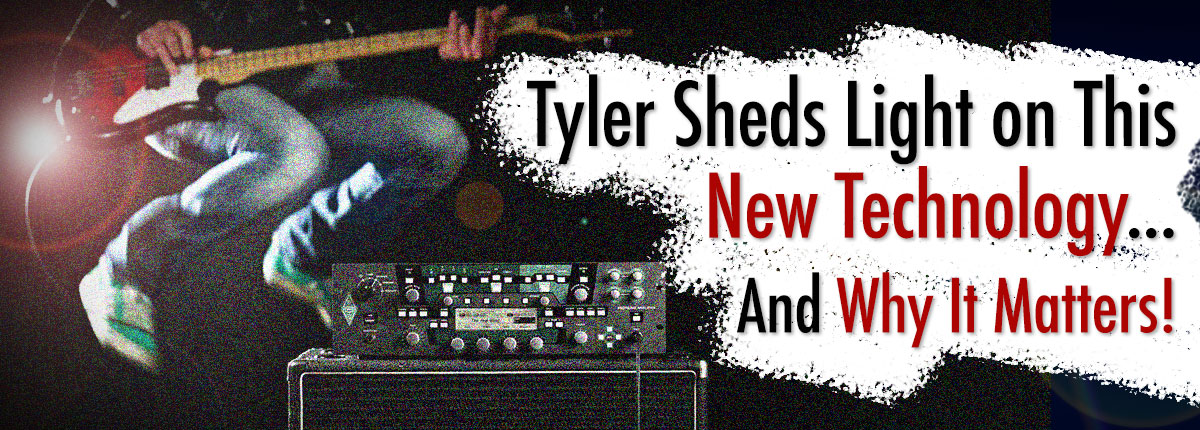
By Tyler Connaghan
Posted 01/08/2021
‘Impulse Response’ – A term that seems to confuse and baffle even the most experienced guitarists. While impulse responses may seem like some sort of technical wizardry to most, they are slowly finding their way into the gear mainstream. The big question is:
“What are they, and why would I want to use them?”
Understanding Impulse Responses
Impulse responses (IRs) are essentially sonic captures of specific elements in relation to a sound source, including the qualities of an amp speaker, microphone, or room. Impulse responses first came about as a way to recreate unique spaces for reverb processors. A mix engineer could use an impulse response to make it sound as if the music they were mixing was played in, for example, the Sydney Opera House or the Walt Disney Concert Hall.
In the guitar world, however, impulse responses typically refer to an amp. Think about the elements that impact your tone. Of course, you have your guitar and your pedals, but after those components lie a series of unique characteristics, including the speaker type, microphone position, room size, room shape, and the list goes on and on.
With impulse responses, guitarists can capture all of that information and store it in a singular ‘file’ to use it in live and studio performances whenever they please. Let’s say you’re in the studio, and you nail a tone that you absolutely love, even down to the type of microphone you used. You can capture the impulse response of that sound and take it on stage with you at your next gig.
Pretty sweet, right?
To get slightly more technical, we can think of an impulse response as the presented output of a system with a short signal, otherwise known as an impulse. The impulse could be an electronic current or a short signal.
If you stood in a large room and clapped your hands, you would hear the sound or reverberation of the space around you. The reverb does not come from the clapping of your hands, as that is simply the impulse. Instead, the reverb comes from the color, size, and shape of the room, which we can think of as the response to the impulse.
With guitar amps, we can think of the incoming guitar signal as the impulse and how the speakers, microphone, and room react as the impulse response.
Using Impulse Responses
For the most part, impulse responses are boiled down to .wav files. When played through standard speakers, you won’t hear anything on these .wav files because of how short the audio is. However, when you play these impulse responses through IR loaders, such as DAW plugins, IR guitar pedals, multi-effects units, or cabinet simulators, they help recreate the equipment used in the IR recording scenario.
Essentially, you could fake the sound of playing through a boutique guitar amp with a vintage microphone in a professional studio, all from the comfort of your home.
Different Impulse Response Methods
Let’s take a look at some of the various options you can use to take advantage of impulse responses.
DAW Plugins
The most popular type of IR loader is a DAW plugin. One of my long-time favorites is Pulse from Lancaster Audio.
This free IR loader plugin is one of the best ways to get started with impulse responses. When recording guitar, simply plug straight into your computer, load this plugin up on your guitar track, and begin recording with any impulse response you want. Plus, this particular IR loader allows you to swap out different IR files easily, toggle between various cabinets, and apply EQ filters.
Amplitube is another excellent example of an impulse response application. It essentially recreates the entirety of a guitar or bass signal chain from instrument to recording, allowing users to get the sound of ultra-realistic amps, mics, and rooms, all from their computers.
IR Guitar Pedals
IR guitar pedals are slowly making their way into the popular market. These little devices give guitarists the ability to load up their favorite impulse responses directly into their pedal chain to use for recordings or performances. The Hotone Omni IR is one of the best IR pedals around, as it comes with 40 high-quality guitar and bass cabinet IRs, an easy-to-use IR loading setup, and third-party IR support.
You can simply connect this pedal to your computer and load up your favorite IRs to take with you on the go.
Modeling Amps
For a long time, tube amp lovers blew off modeling amps as ‘gimmicky.’ However, these IR applications can now be found in professionals studios and rigs worldwide.
One great example is the Kemper Profiler, which nearly every guitarist has likely heard about. The Kemper Profiler uses unique Cab Maker software, allowing users to convert IR .wav files into .kipr files. These .kipr files are then loaded into the Kemper Profiler via USB or external hard drive.
You’ve Got The Whole World In Your Hands
With an extensive collection of impulse responses and the right software or hardware, your options are limitless. Of course, you can create your own impulse responses too, though the process is a bit more complicated and one I hope to write about for you all in the near future.
The critical takeaway here is that impulse responses come in many forms, though each can be used to recreate unique or popular tones in any situation. I recommend diving in and trying as many different types as possible to take your tonal possibilities to another dimension.
